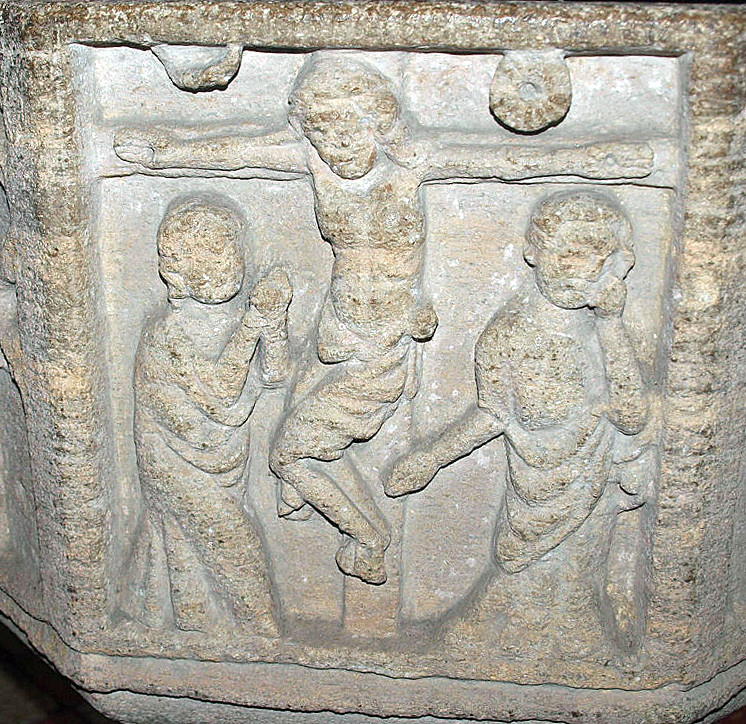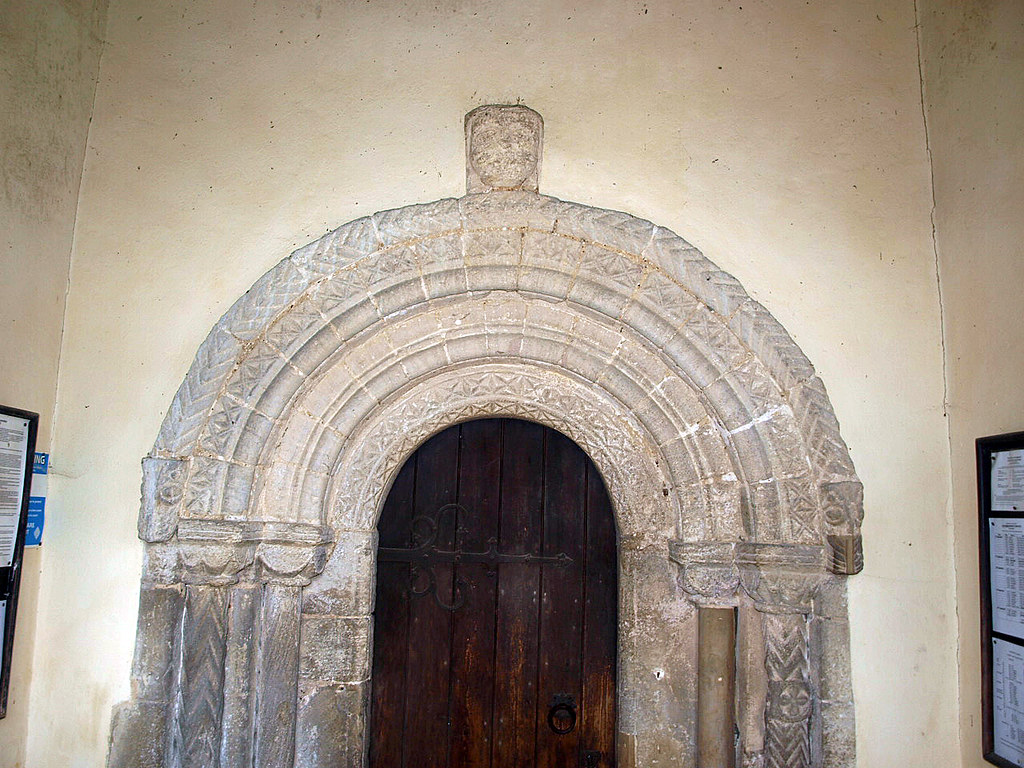HONINGTON. With miles of woods and meadows round about, and elms and willows by the Blackbourne stream, it is a gracious little place of which all Suffolk is proud, for it gave England a farmer’s boy who wrote a poem which has been read for over a century.
There are two things to see in this hollow where life goes slowly by, a cottage birthplace, and a charming little church whose simple tower with a quaint stair turret watches over fields and lanes that the village poet loved. The splendid medieval porch has panels of flint, a beautiful parapet enriched with monograms, and an archway under graceful niches; and in it is a Norman doorway with two pairs of ornamented shafts and a stone face.
The interior of the church has not the charm of unplastered walls, but the 14th century chancel has an exquisite piscina, and there is a Norman chancel arch only about six feet wide. Among some traces of old paintings are a Madonna and child, and figures of knights in armour, all fading away on the walls. The font was carved six centuries ago and is remarkable for its bold ornaments and a panel of the Crucifixion with figures of Mary and John. There are bench-ends with fine poppyheads and very queer carvings of a monkey, a man with bagpipes, and a dog scratching itself; and one of the best possessions of all is a brass portrait of George Duke wearing the embroidered doublet and ruff of which he must have been very proud in Elizabethan England.
But of nothing is the village itself more proud than of its poet, Robert Bloomfield, to whom there is an inscription in the nave. The cottage where he was born in 1766 is close to the church, though the rebuilding of it some years ago has left little of a home Suffolk should have kept. It is not certain which room Robert was born in, but we can see the garden where he played as a little fellow, and the fields going down to the river he loved all his life. He never forgot the charms of Honington, where his mother had kept the village school, and from where he had set off to work on William Austin’s farm at Sapiston; and when his Farmer’s Boy poem made him famous he came back to look at these scenes of his childhood. Some of his love of this place came out when he wrote:
My heart was roused, and Fancy on the wing
Thus heard the language of enchanting spring:
“Come to thy native groves and fruitful fields!
Thou knowest the fragrance that the wildflower yields:
Inhale the breeze that bends the purple bud
And play along the margin of the wood.”
Thus heard the language of enchanting spring:
“Come to thy native groves and fruitful fields!
Thou knowest the fragrance that the wildflower yields:
Inhale the breeze that bends the purple bud
And play along the margin of the wood.”
His success was only shortlived, and he died in poverty at Shefford in Bedfordshire, sleeping at Campton in that county.



majority of your comments are copied straight from Pevsner and Arthur Mee
ReplyDeleteThat's the point of the blog!
Delete